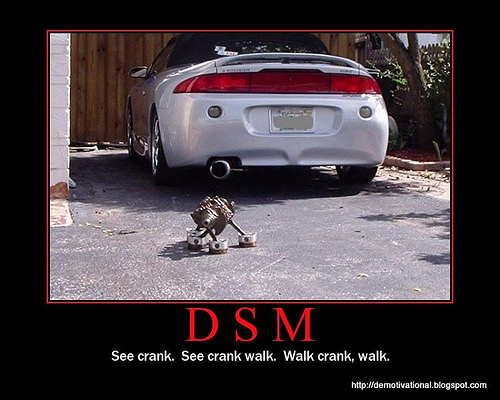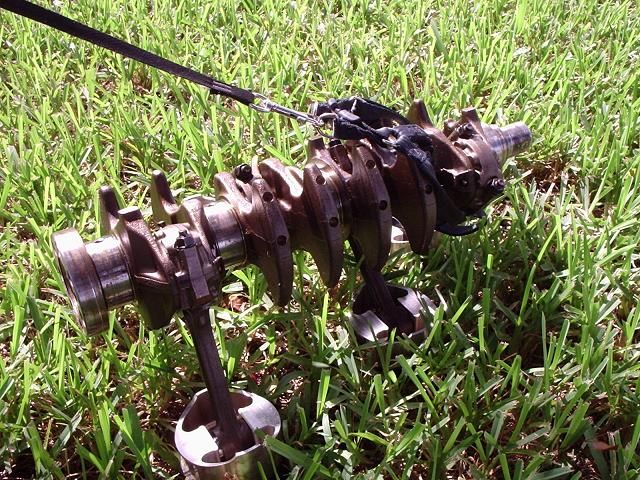A 'walking' crankshaft is a crankshaft that moves too much inside the engine. This is also known as excessive thrust bearing play. The movement is usually due to the crankshaft not fitting inside its bearings correctly. While not bad for the crankshaft, the movement can place excessive or uneven loads on the bearings, causing premature failures.
Many 2G owners have suffered from walking crankshafts. It appears that Mitsubishi built many 2G engines using defective crankshafts, which were machined out of specification and are thus capable of moving around too much inside the block. All 2G model years appear to be affected to some degree.
To fix this problem, Mitsubishi has designed several versions of matching crankshaft bearings. This allows the defective motor to retain the crankshaft, yet matches the bearings correctly so as to eliminate the excessive crankshaft movement. Matching the bearings in this manner is tricky and requires exact information about when the crankshaft was manufactured, which may be determined by color markings on the crankshaft itself. The 2G factory manual includes information on how to match crankshafts to bearings.
1G owners do not generally need to worry, as there are no chronic problems with crankwalk in per-1995 cars. However, it is possible for any engine to experience crankwalk if there is a problem with the crankshaft bearings. It has been reported that 'small rod' / 7-bolt flywheel motors (manufactured from later 1992 through 1994 on 1Gs) are more prone to crankwalk than 'big rod' / 6-bolt flywheel engines (manufactured from 1989 to early 1992). However, there can be no guarantees, since big block V8s and all other engines can also suffer from crankwalk.
It can be difficult to tell if a particular car is experiencing crankwalk. Symptoms are usually indirect and difficult to diagnose until major damage occurs.
Since the clutch places pressure on the crankshaft, many owners have reported clutch or shifting problems associated with the walking crank. Having the clutch 'stick' down on left-hand turns is often a telltale sign of crankwalk. Other symptoms include inconsistent engagement height, poor or rough engagement, difficulty shifting, ticking noises and varying pedal height or pressure. Another possibility is having the engine RPM decrease significantly when the clutch pedal is down.
Another problem with crankwalk is that the crankshaft may move so much as to literally tear up and destroy the 2G crankshaft angle sensor. This problem usually manifests itself as a ticking noise coming from the timing belt area, as the sensor is literally and slowly ground away by the crankshaft. Any such noise should be investigated right away to prevent serious problems.
Unfortunately, cranshaft angle sensor failure usually leads to a replacement sensor, rather than a replacement crankshaft, as mechanics fail to diagnose the underlying problem. 2G owners who have experienced premature failure of the crankshaft angle sensor should investigate the possibility of a walking crankshaft immediately.
http://members.shaw.ca/cost....htm#whatiscrankwalk[This message has been edited by Fiero_Fan_88 (edited 01-21-2012).]




















